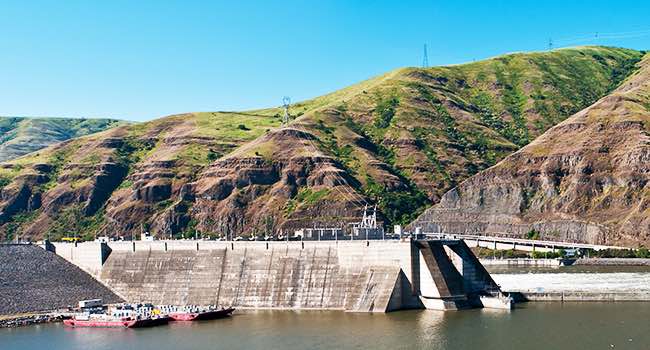forum
library
tutorial
contact

Another Major Dam Study
Comes and Goes
by Marty Trillhasse
Lewiston Tribune, August 13, 2020
|
the film forum library tutorial contact |

|
Another Major Dam Study
by Marty Trillhasse
|
 Well, that was quick.
Well, that was quick.
As July closed, the federal agencies responsible for operating dams, power production and fish mitigation released their latest Environmental Impact Statement.
It was a massive, 5,000-page blueprint for managing 14 dams along the Columbia and Snake rivers. It was four years and millions of dollars in the making.
And within a few days, it was a ho-hum story. Let's move on. Nothing to see here, except a pledge to expand spill to aid smolt-to-adult survival rates and a decision against breaching four dams on the lower Snake River.
Next, the "Groundhog Day" syndrome kicked in.
Dam advocates cheered.
"We are pleased to see the agencies support a preferred alternative that balances clean hydropower, efficient navigation, and critical water supplies with ongoing salmon recovery efforts," said Kristin Meira, executive director of the Pacific Northwest Waterways Association.
Frustrated fish advocates prepared for yet another return trip to the federal courts that ordered the latest study in the first place.
"The new regulations are already under legal challenge; it seems all but inevitable that this new plan will end up in court, too," EarthJustice attorney Todd True told the Lewiston Tribune's Eric Barker.:
Meanwhile, the federal agencies responsible for operating the dams as well as the region they serve will remain under the cloud of the Endangered Species Act and the National Environmental Policy Act. And the central Idaho communities tied to the fishing economy will watch their prospects dwindle with the declining salmon and steelhead numbers, as well as abbreviated seasons.
If this has the look and feel of Kabuki theater, consider the history of evaluations and reports, typically ordered by a federal judge after concluding efforts to preserve the fish did not meet the law:
The courts can not compel the people operating the federal dams to take major steps. And fish advocates are obliged to keep up the legal pressure. So it's a standoff.
In the meantime, you have all the earmarks of a self-perpetuating bureaucracy -- whether it's legal, activist or government. How many legal, engineering, environmental and journalistic careers have been launched and concluded during that era?
More than a year ago, Idaho Congressman Mike Simpson signaled his waning patience with this process.
Speaking to the Andrus Center's "Energy, Salmon, Agriculture, and Community; Can We Come Together?" Simpson sounded like someone who was getting ready to act.
"We have been asking the 'what if' questions: If the dams were to come out, how would you address Lewiston; if the dams were to come out, how would you address the barging issue and the (concerns) grain growers have of getting wheat down the river: If the dams were to come out, how would you address the Washington farmers that have concerns they would have to lower all of their (irrigation) intake pipes and everything to farm?" Simpson said. "There are an awful lot of questions that have to be asked, because you need to address these if you are going to solve this problem."
So which is likely to come first? Simpson's blueprint or another multimillion dollar federal study that will be discarded almost the moment it's published?
learn more on topics covered in the film
see the video
read the script
learn the songs
discussion forum
